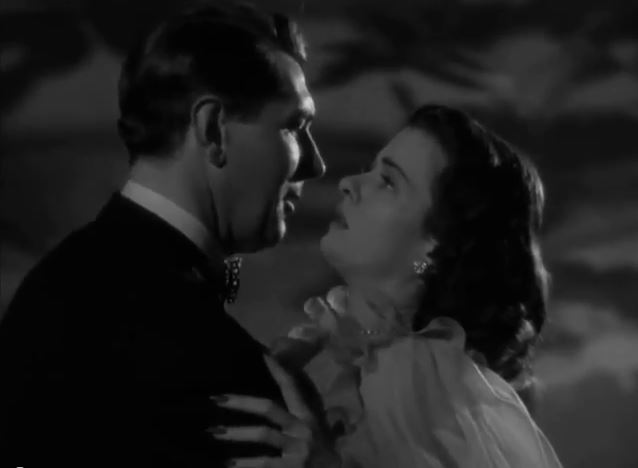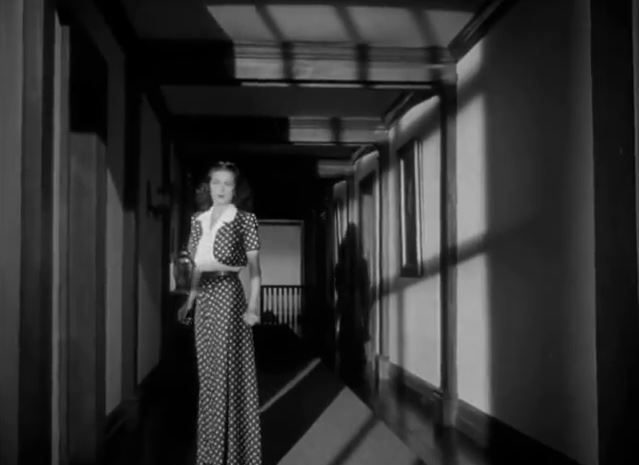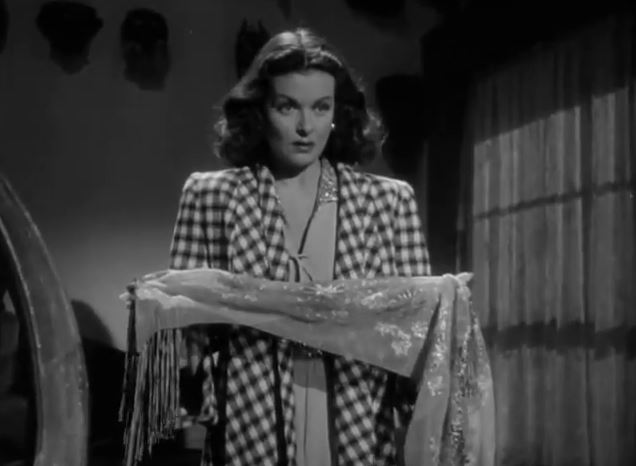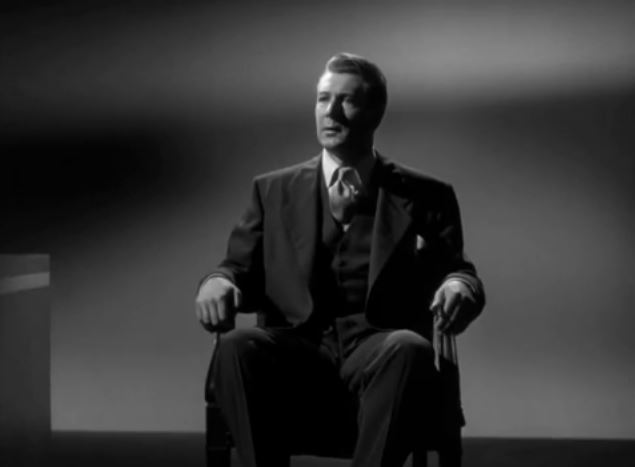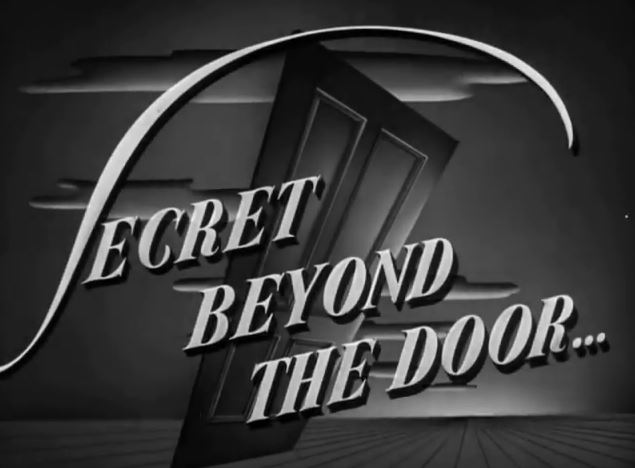The Secret Beyond the Door (Fritz Lang, 1947, with Joan Bennett and Richard Redgrave) was released at the height of the brief boom in what is styled by this website at least, as the ‘paranoid woman film.’ In these momentarily fashionable movies, female sobs glance from wall to wall, doors loom large, keys symbolise everything, and worst of all — your husband wants to KILL YOU. The psychology is always cod, but to make it even fishier, a psychoanalyst character is usually thrown in. In The Secret Beyond the Door, one of the lead’s friends pipes up at the half way point and announces: “Paging Dr. Freud!” Excitement, mystery and nerves on edge — is this what every woman longs for?
Read the article at Classic Film Noir
Joan Bennett in Secret Beyond the Door. Ladies, it is your turn now.
Nowhere do you get more of this nonsense than in film noir. The 1940s kept all of its nastiest secrets in noir, and that’s what makes watching film noir so rewarding. It’s the history lessons. There are only three types of woman in any film noir at any given time — the deadly seductress; the innocent and rejuvenating redeemer; and the paranoid wifelet. Even though it's not a paranoid woman film, The Stranger (1946, Orson Welles) sees Loretta Young fling herself from doubt to indecision, unable to handle truth of any sort. Even when Edward G. Robinson FORCES HER to watch footage of Nazi concentration camps (pretty bold for 1946) she still refuses to accept the villainy that;s staring her in the face, probably because the villainy is in that most precious of American sanctums, the suburban family home. It’s true that noir was the only place at the time where women are deadly, sexy and strong, but the flipside of that has noir women not merely harmless, frilly and weak, but as paranoid victims of psychological evils, often seemingly dreamed up by themselves.
If she loves him, shouldn't she look happier than this?
Joan Bennett, paranoid woman, Hollywood, 1947
The paranoid woman film has its feet in the horror camp, though forays into thriller and drama were plausible, especially if noir elements are combined as in The Secret Beyond the Door. Infamous paranoid woman films include: The Two Mrs. Carrolls (1947), Possessed (1947), Sorry, Wrong Number (1948), Sleep, My Love (1948), The Heiress (1949), Under Capricorn (1949), and Caught (1949). In Sleep, My Love, a wealthy New Yorker, hasn't a clue how she ended up on a train bound for Boston, but someone may be out to murder her. In Alfred Hitchcock's Under Capricorn, Ingrid Bergman plays an alcoholic with a dark secret in 1830s Australia.
The house yes - but it's the scarf that really plays on your weak, female mind
Trial, authority, masculinity, film noir, Richard Redgrave (1947)
Women — here for you in black and white, are your greatest fears — domestic life, the family, motherhood, self-sacrifice, and romance. I like the way that cinema historian Jeanine Basinger says that these movies ultimately serve "to reaffirm in the end the concept that a woman's true job is that of being a woman". I refer to this rather good book here: Basinger, Jeanine (1994). A Woman's View: How Hollywood Spoke to Women, 1930–1960.


